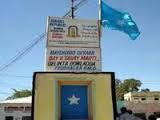Natural Disaster Management Committee (NDMC) reaches Baidoa

Natural Disaster Management Committee led by Somali deputy Prime Minister, Omar Arte Qalib has reached Baidoa town to discuss with the residents.
The committee that was set up to come up with mitigation measures ahead of the rains, is expected to hold talks with administration and the residents over El Niño.
Heavy rains continue to be experienced in some parts of the country especially agricultural rich regions.
The committee has been appointed to create awareness on El Niño and to assess areas affected floods.
The torrential rains are expected between September and December in most areas, but will extend to February next year in some parts of the greater Horn of Africa region.
Reports issued by agencies show that the region will experience El Niño rains, hence government need to put in place mitigation measures to minimize the damage caused by the heavy rains
Recently, the World Meteorological Organization — the UN body for studying weather and ocean-atmosphere interaction — said the 2015-2016 El Niño will probably be the strongest since 1997-1998 and potentially among the top four events since 1950.
According to the ICPAC forecast, almost the whole of the East African region is expected to receive normal to above normal rainfall with the exception of southern Tanzania, which is normally dry during the short rains season.
Areas expected to receive above normal rainfall are some parts of the country especially regions along the town rivers (Shabelle and Jubba), which will also be the most affected by the torrential rains, if proper mitigation measures are not put in place.
The next extreme weather phenomenon expected to hit the region once El Niño subsides is La Niña, which is associated with drought and lack of rainfall. La Niña and El Niño happen every three to five years.
The catastrophic drought in Kenya, Ethiopia, Djibouti and Somalia in 2011, for example, is thought to be an indirect consequence of the 2010-2011 La Niña.